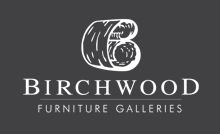When shopping for case goods, our clients often feel that solid wood is the only option. Although it has its positive attributes, we suggest you don’t dismiss veneered furniture right off the bat. It is a common misconception that solid wood furniture is of better quality than veneered pieces. In fact, most people do not realize that veneers are often used on very high end furniture. Both types of case goods have their pros and cons. It’s our job to help keep you informed so that you can make the right decision to meet your furniture needs!

www.canadel.ca; http://www.aspenhome.net
Types of Veneer
When clients have the pre-conceived notion that veneer products are inferior to solid wood, this tends to be because of their previous experience shopping at low budget, big box stores. These stores sell case goods that have paper thin veneers laminated on low quality particle board. They are not meant to last.
This furniture is not a good representation of available veneered products. Like anything, there are various qualities of veneer on the market. The thickness of the wood is what establishes its quality. Wood veneers generally range in thickness from a paper thin, 1/40”, up to 1/16”. The thicker it is, the more durable and fixable long term, the product will be.
Another big difference between wood laminated furniture is based on the product that lies beneath the veneer. Lower end products tend to be constructed with particle board (of which again, there are varying qualities). Higher end products are generally made using MDF, a stronger, and better quality material.
This makes a lot of difference, as particle board is more prone to moisture absorption, and far less dense than MDF, both of which decrease its reliability. MDF’s density make it extremely consistent throughout, and means that it tends not to split.
In comparison with wood, MDF virtually does not expand or contract. This means any veneered product you buy at Birchwood Furniture Galleries will remain intact, and look exactly the same for years to come!
Solid Wood Characteristics
Don’t be convinced that solid wood is the better product without knowing the facts. Solid wood has benefits that veneer doesn’t, but it also takes more care. You cannot decide that it is a superior choice unless you take all of it’s characteristics into consideration.
Wood is a natural product and as such it lives with its natural tendencies. These are the annual cycles of expanding and contracting seasonally. When purchasing Canadian made solid wood furniture, you are generally in the clear when it comes to these major changes in the wood. However, solid wood imported furniture is especially susceptible to splitting, cracking, warping and general movement. These changes in a product are due to the drastic differences in humidity and temperature from the piece’s place of origin to our dry Alberta climate. Expect your imported piece to have some ever-changing “character”.

The next thing to take into consideration is caring for your solid wood products. Now, if you were to take the best solid wood product on the market and put it up to the window in the dead of winter, with a heat register blowing underneath it, what do you think would happen? That piece would crack, warp and split every time!
It is very important to understand the tendencies of your wood pieces if you want them to last.Please consider the humidity level, temperatures and placement of your furniture in your home. If you are mindful of these changes throughout the year, you are likely to have few problems with a solid wood product.
Choosing your Finish
When buying solid wood furniture from our suppliers, you have a range of about 9 – 60 customizable stain and finish options. Not only can you select your colour of preference, you can decide if you’d like your piece distressed, antiqued, glossy or matte. Read more in our post about quality canadian made case goods.
Veneer options are far fewer. Generally veneer products are made overseas and imported. This allows you only one finish choice per collection because these manufacturers are mass producing furniture, not making product to order. Although you have less options, this product provides you with a lower price point for great quality and durability.
Repairing Damage
Another aspect to take into account when comparing solid to veneered wood products is the repair process. This is an area where they have some similarities and differences. Solid wood products are highly repairable. If something bumps or falls on a solid wood piece of furniture, or if a part of it breaks completely, it can be repaired. However, if a solid wood dining table top were dinged, the whole top would need to be refinished. You could not touch up just one spot.
The advantage of wood is that it can be brought back more easily from severe damage. This is why some manufacturers call their products “heirloom” furniture. They know that their furniture will stand the test of time. Your grandmother is passing down her classic Quaker table set? This be repaired, refinished, and restrained or painted for generations to come. Here is a perfect example.
If the same marking was present on a veneered table top, this would be filled in, and colour matched. This could be equally well repaired while utilizing significantly less man-power.You would not need to refinish the entire table top, as with its solid wood counterpart.
The disadvantage to veneer is that when faced with repairing severe damage, you would belimited based on the thickness of the piece’s veneer. You would have to be weary of sanding through it, an irreversible mistake.
For Your Protection
When shopping at Birchwood Furniture Galleries, we’ve got your back. Our supplier, Aspenhome’s furniture is made up of a thick veneer laminated on MDF. Not only are their pieces good and solid product, they offer a 10 year warranty on their furniture. Try and beat that! Solid wood manufacturers do not offer that kind of protection.
Still not into veneer? No worries! If you decide you are in the market for solid wood furniture, we sell an amazing wood insurance plan called DiamondKote Wood Furniture Protection.Your coverage will include protection from spills and stains, accidental damage, and cracking for up to five years! How could you say no to that?
All that we hope you will take from this is that there is no clear choice – both options can be equivalent products and are worth a second thought. We hope this helps keep you informed so that you can make the right decision to meet your furniture needs!
Have any questions while debating your wood product choice? Give us a ring – our Design Consultants would love to help you with your selection.








